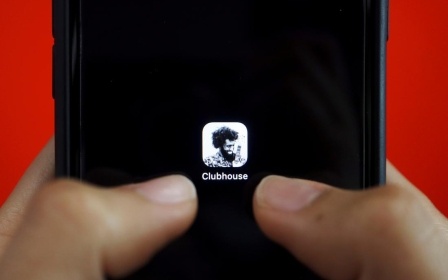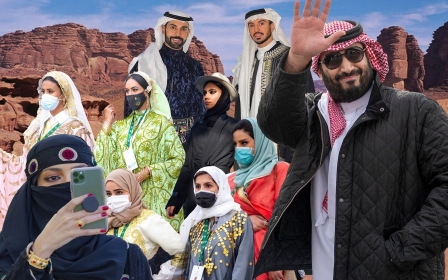France 'rejected MBS demand to label Salvator Mundi as 100 percent Da Vinci'

The world’s most expensive painting, which is Saudi-owned, was not exhibited at the Louvre two years ago because the French government would not bow to pressure from Riyadh to present the contentious artwork as “100 percent Leonardo da Vinci,” a new documentary has alleged.
The Salvator Mundi was purchased in New York in November 2017 for $450m by a little-known Saudi prince, who was reportedly acting as a proxy to Crown Prince Mohammed bin Salman.
The painting had been due to be displayed at the Musee du Louvre in Paris in 2019 at a high profile Da Vinci exhibition, and at the Louvre Abu Dhabi a year earlier. However, it failed to appear at either.
A new French documentary released next week, The Savior for Sale, sheds light on the affair, which resulted in a diplomatic tussle between Riyadh and Paris, according to a report in the Art Newspaper.
Saudi-France partnership
A senior official at the French culture ministry, code-named Pierre in the film, said that the painting was likely to have been lent to France during the Saudi crown prince’s visit to Paris in April 2018.
“MBS was received with considerable pomp during this visit and the Al-Ula agreement was signed at this time,” he said, referring to bin Salman by his initials.
“There was a considerable emphasis given to heritage in this agreement.”
The agreement referred to a multi-billion dollar deal that would see France help transform the historic Saudi city of Al-Ula into a major cultural tourism destination. Paris agreed to assist with the establishment of museums, archaeological digs and conservation projects at the Unesco World Heritage Site, in addition to developing transport, hotels and infrastructure in the region.
'At the end of the process the verdict was revealed: the scientific evidence was that Leonardo da Vinci only made a contribution to the painting'
- Jacques, senior French official
“It would not be crazy to say that at that moment the decision was taken to entrust the painting to France,” Pierre said. “The Elysee explained it was important for MBS to position himself as someone who was opening up Saudi Arabia culturally and to place himself as a symbol of modernity.”
Another senior official in the French government, code-named Jacques, explained that the painting arrived in Paris in June 2019, ahead of the Da Vinci exhibition four months later, and was analysed at the Louvre’s technical laboratory.
“The painting went under a number of machines and it was X-rayed all over,” Jacques said.
“At the end of the process the verdict was revealed: the scientific evidence was that Leonardo da Vinci only made a contribution to the painting. There was no doubt. And so, we informed the Saudis.”
'Present it as 100 percent Leonardo da Vinci'
That doubt over the authenticity of the painting allegedly led to outrage from Riyadh.
At the time of its sale at Christie's auction house in New York, the Salvator Mundi had been billed as a long-lost piece from the Italian Renaissance figure, who is widely considered to be one of the greatest artists ever. It was even labelled “the male Mona Lisa”.
“MBS laid down very clear conditions - show the Salvator Mundi beside the Mona Lisa without any other explanation, present it as 100 percent Leonardo da Vinci,” Jacques claimed.
A diplomatic tug of war ensued, with the film alleging that French Minister of Foreign Affairs Jean-Yves Le Drian and then-minister of culture Franck Riester lobbied on behalf of the Saudi request, noting the significant deals Riyadh was signing with France.
However, President Emmanuel Macron decided that he would not accept Riyadh’s conditions.
“Macron took the decision not to follow MBS’s conditions,” Jacques said. “Understand, at stake was our credibility, the credibility of France, of the Louvre, over a long period.
“My position, which I communicated to the highest level, was that the Saudis’ conditions were unreasonable and that exhibiting it on their terms would have been laundering a work at $450m.”
The painting was subsequently not exhibited at the Louvre, and its whereabouts have remained a mystery, with speculation that it may hang in Mohammed bin Salman’s super yacht.
Its initial sale to the Saudi royal family in 2017 risked offending the deeply conservative nation for its depiction of Jesus, a prophet in Islam. Many clerics in Saudi Arabia consider the artistic depiction of any of the prophets to be a form of sacrilege.
The $450m purchase also raised eyebrows as it took place at the same time that the Saudi government, under the instruction of MBS, had rounded up dozens of billionaire princes and businessmen in what it said was a crackdown on corruption and excess.
Less than two weeks before the auction, MBS arrested more than 200 of the richest Saudi princes, businessmen and government officials. Many were beaten, and released from the gilded cage of Riyadh's Ritz-Carlton hotel only after agreeing to hand over assets worth billions of dollars.
Middle East Eye propose une couverture et une analyse indépendantes et incomparables du Moyen-Orient, de l’Afrique du Nord et d’autres régions du monde. Pour en savoir plus sur la reprise de ce contenu et les frais qui s’appliquent, veuillez remplir ce formulaire [en anglais]. Pour en savoir plus sur MEE, cliquez ici [en anglais].





